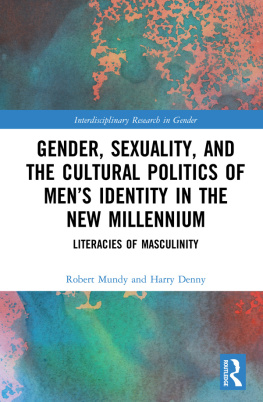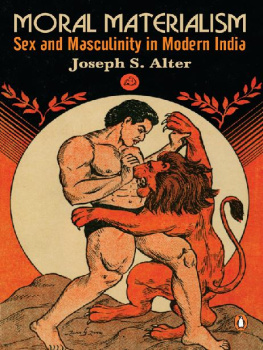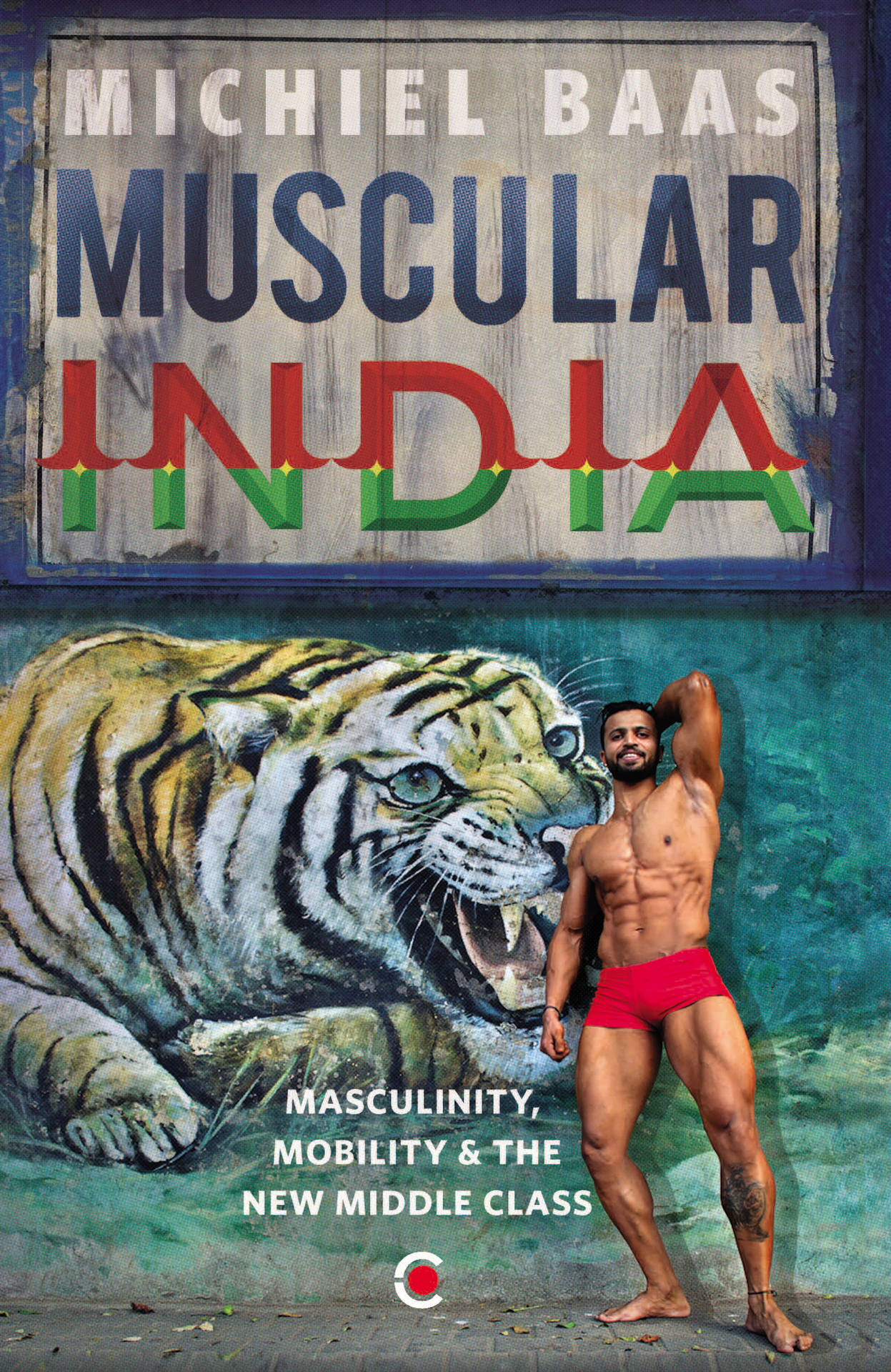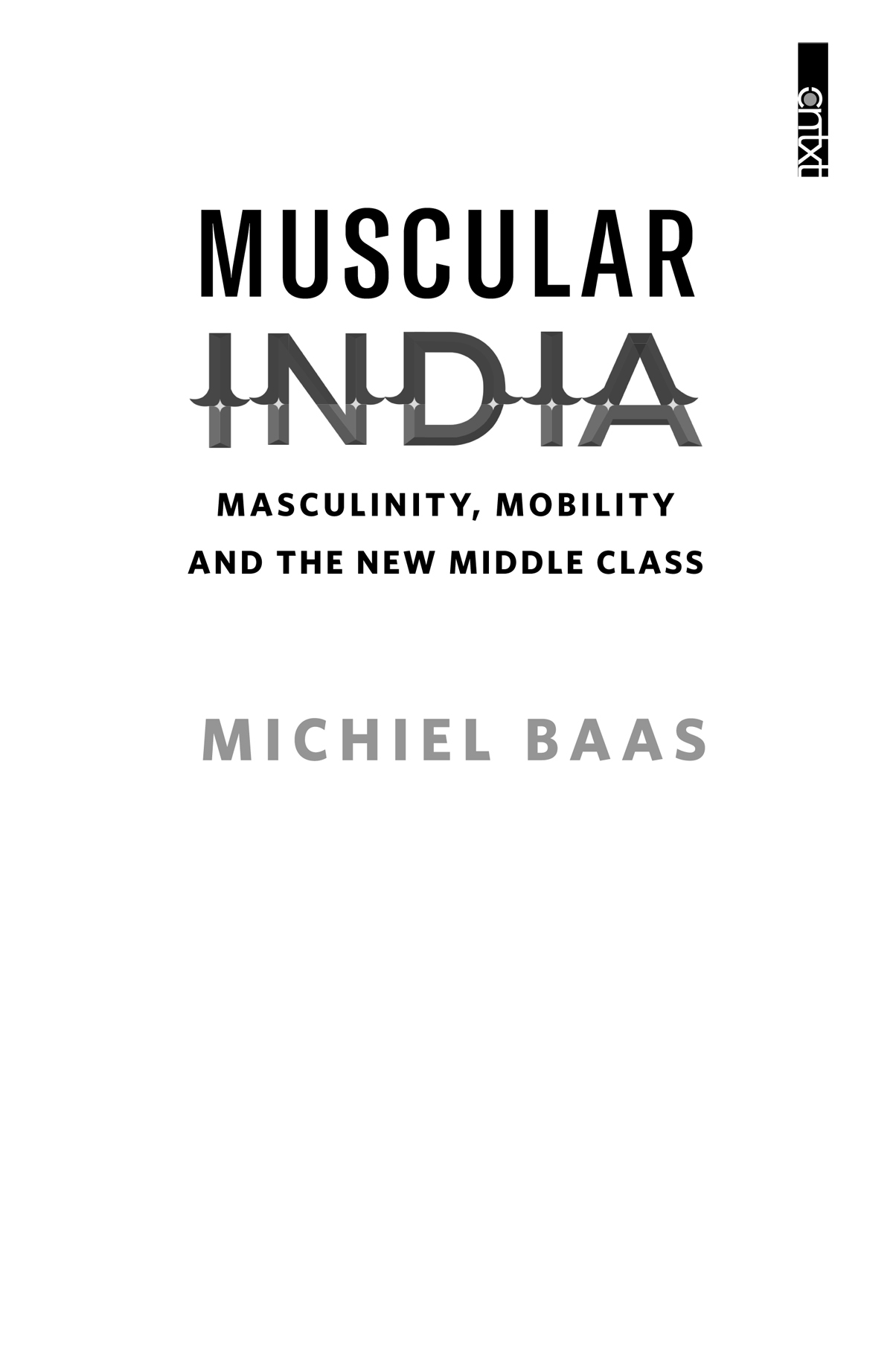PRAISE FOR MUSCULAR INDIA
If you are looking for politically correct clichs about masculinity and changing India, go elsewhere. Enter here for a tender and absorbing story of muscular men, their searching hearts, their quest to matter in the world. In this intricate and often entertaining landscape of gyms and trainers and body building, you glimpse a truth about how vulnerable aspiration makes us, how conditional are the promises of change, and how lonely the enterprise of becoming a man. Paromita Vohra, filmmaker, writer and founder, Agents of Ishq
Muscular India is an essential addition to the study of upward mobility in India. Through his immersion in the world of gym-made masculinity, Baas bring us unforgettable stories of young men navigating the countrys labyrinthine middle class armed with their bodies. Snigdha Poonam, author of Dreamers: How Young Indians Are Changing Their World
Baass rich, textured and deeply insightful ethnography of body building provides us with profoundly important insights on masculinity and sexuality in South Asia. His analysis produces a critically incisive understanding of embodiment, establishing a new and important anthropological perspective on the anxieties and ambivalences of middle-class identity in modern India. Joseph S. Alter, author of The Wrestlers Body: Identity and Ideology in North India and Gandhis Body: Sex, Diet, and the Politics of Nationalism
Muscular India is a fascinating story of national and bodily transformation, shining a light on the countrys rising middle class by way of its muscle men and fitness fanatics. Michiel Baas uses an impressive mix of academic research and colourful real-life in the gym stories to reveal a deep urge for self-improvement amongst Indias urban elite, from the Bollywood idols whose sculpted bodies they emulate to the ambitious working-class men who train and encourage them. James Crabtree, author of The Billionaire Raj
Michiel Baas uses bodybuilding and the gym culture to provide deep insights into the Indian middle class, notions of mobility, cultures of consumption, the obsession with Bollywood bodies and sexual desire. Based on years of ethnographic research, the book is invaluable in understanding the paradoxes of urban India. Ronojoy Sen, author of Nation at Play: A History of Sport in India
What do body building and the muscular body mean in contemporary India? To this apparently straightforward question, Michiel Baas provides a series of fascinating answers that capture the extraordinary social and cultural churn in contemporary Indian society. An academic readership will discover new ways of thinking of the body as an exploration of social life whereas a non-academic one will discover what accessible scholarly analysis has to offer towards a nuanced understanding of the Indian present. Sanjay Srivastava, author of Entangled Urbanism: Slum, Gated Community and Shopping Mall in Delhi and Gurgaon
Its rare to find a study that effectively combines theory and practice, but Michiel Baass study of masculinity and the middle class in India does just that. Muscular India is conceptually sophisticated and ethnographically immersive; it moves fluently from idea to detail, and back, all the while introducing us to a cast of well-rounded characters who play out their lives in fascinating, little-explored settings. Along the way, the book also makes detours into a host of important contemporary issues, including consumerism, urbanisation, sexual mores, food adulteration and the nations technology industry. What all of this adds up to is a nuanced and layered portrait of modern India. Akash Kapur, author of India Becoming: A Portrait of Life in Modern India
Through his illustrative and eloquent writing, Michiel Baas takes us on a vivid journey through the bumpy, aspirational worlds of lower-middle-class male fitness trainers in India. In all its ethnographic vitality, the author successfully captures how a poignant search for economic status and social respectability, intersects with the desire for muscularity and transformed bodies among these men. Baass lucid and nuanced reflections, on how these robustly modelled bodies become emblematic of a new India, is a must-read for those interested in the expanding market for body-building in middle-class and urban India. Atreyee Sen, author of Shiv Sena Women: Violence and Communalism in a Bombay Slum
First published by Context, an imprint of Westland Publications Private Limited, in 2020
1st Floor, A Block, East Wing, Plot No. 40, SP Infocity, Dr MGR Salai, Perungudi, Kandanchavadi, Chennai 600096
Westland, the Westland logo, Context and the Context logo are trademarks of Westland Publications Private Limited, or its affiliates.
Copyright Michiel Baas, 2020
ISBN: 9789389648218
The views and opinions expressed in this work are the authors own and the facts are as reported by him, and the publisher is in no way liable for the same.
All rights reserved
No part of this book may be reproduced, or stored in a retrieval system, or transmitted in any form or by any means, electronic, mechanical, photocopying, recording, or otherwise, without express written permission of the publisher.
I t took three movies and a magazine to popularise a new bodily ideal among middle-class men in India, characterised by bulging biceps, rock-hard abs and visibly pronounced pecs. Radiating masculine strength and athleticism, this ideal diverges markedly from the healthy potbelly of yesteryears middle-class maleonce the signifier of prosperity and well-being. This new ideal does not align easily with that of the pehlwan-wrestler whose body is the product of a diet rich in ghee, almonds and cow milk. Even if there is some tangible (or historical) connection in terms of workout routines, the end result is a radically different body. While this new lean and muscular body, with its emphasis on vascularity, comes closer to that of the working classes, within a middle-class context it now references discipline, professionalism and cosmopolitanism. While this trend has been taking shape for roughly two decades, its only in the last ten years or so that it has caused a veritable fitness boom across India.
For an older generation of fitness trainers and bodybuilders, Salman Khans hit-movie Pyaar Kiya to Darna Kya (1998) was the first intimation of what could be achieved with their bodies. However, this only translated into the real and very rapid growth in gym memberships and demand for personal training when Shah Rukh Khan revealed his freshly baked six-pack abs in Om Shanti Om (2007). The actors dramatic transformation was a hot topic of discussion in popular media that year. Yet, this was nothing compared to what would befall Aamir Khan after he starred in Ghajini (2008), the Hindi remake of a 2005 Tamil blockbuster, itself based on the American Memento (2000). Shot not long after he played an art teacher and ordinary boy-next-door in Taare Zameen Par (2007), in Ghajini the actor sports a phenomenally muscular physique that immediately begged the question: how had he pulled it off? In 2007, the Indian edition of Mens Health was launched, further propelling the creed of the lean, muscular body. The magazines use of cover models who were not celebrities confirmed the potential of the Indian male body beyond Bollywoods elite.












